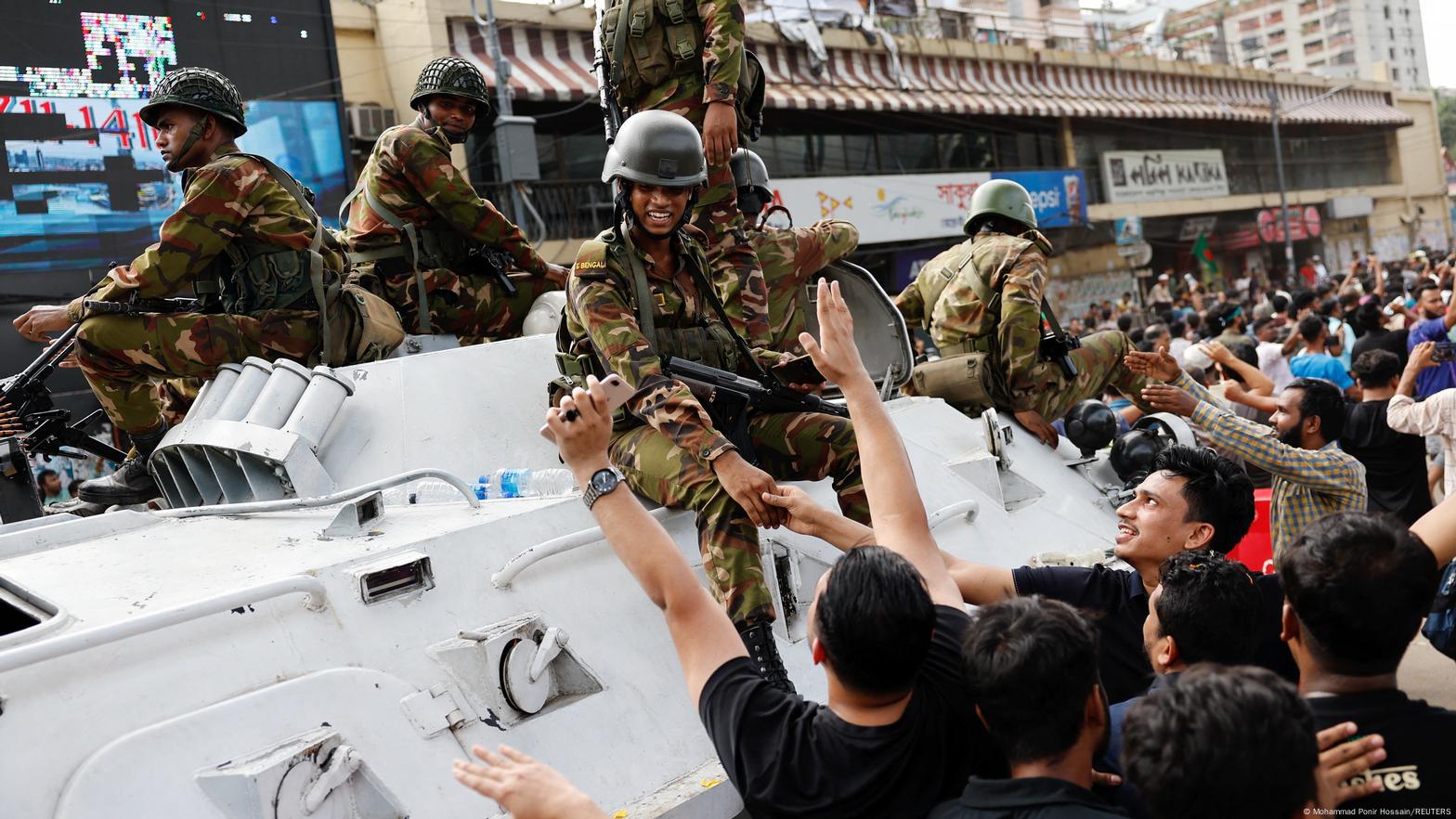Bangladesh’s military has been in control of the country since mass protests in recent weeks forced Prime Minister Sheikh Hasina to resign and flee the country.
Hasina, 76, had been in power since 2009 but was charged in January 2024 with rigging an election and has faced millions of people in the streets over the past month demanding her resignation.
Hundreds of people were killed when police tried to contain the protests, which grew to the point that Hasina left Bangladesh on August 5 on board a helicopter, when the military withdrew its support.
The army would form an interim government
Army chief General Waker Uz Zaman announced on state television that Hasina had resigned and the military would form an interim government.
“The country has suffered a lot, the economy has been hit, many people have died. It is time to stop the violence,” Waker said shortly after a jubilant crowd stormed Hasina’s official residence and ransacked it.
“The government must be headed by Yanus”
The leader of the student movement that started the protests, Nahid Islam, said in a video message that the interim government should be headed by Mohammad Yunus, a Nobel Peace Prize-winning economist and social entrepreneur “who is widely accepted.”
Millions of Bangladeshis flooded the streets of Dhaka to celebrate after Waker’s announcement, but there were also scenes of chaos and anger: Police reported at least 66 deaths on August 5 when mobs attacked Hasina’s allies.
Protesters stormed parliament and set fire to television stations, while some destroyed statues of Hasina’s father, Sheikh Mujibur Rahman, the country’s independence hero.
The fall of Sheikh Hasina
The protests began after the reintroduction of a quota system that reserved more than half of public jobs for certain groups. The move sparked calls for the resignation of Hasina, who was accused of using the state apparatus to cling to power, including by killing her opponents.
At least 366 people have died since the start of the protests on July 1, according to a count by the agency AFP based on reports from police, authorities and doctors in hospitals.
Waker said the curfew would be lifted on Tuesday. Bangladeshi President Mohammed Shahabuddin ordered the release of people arrested during the protests and former opposition prime minister Khaleda Zia on August 5.
Zia, 78, was arrested in 2018 by her arch-rival Hasina for corruption.
The president and the army chief met with opposition leaders on August 5 and “decided to form an interim government immediately,” they said in a statement.
Hasina’s whereabouts were initially unknown. Indian media reported that her helicopter landed at a military base near New Delhi.
A senior source said she wanted to move to London but the British government called for a United Nations-led inquiry into “unprecedented levels of violence”, raising questions about whether she would be welcomed in Britain.
Keep reading:
- Bangladesh PM resigns, leaves country after protests
- US calls for peaceful transition in Bangladesh after PM’s exile
- Death toll doubles to 116 after stampede at religious event in India
